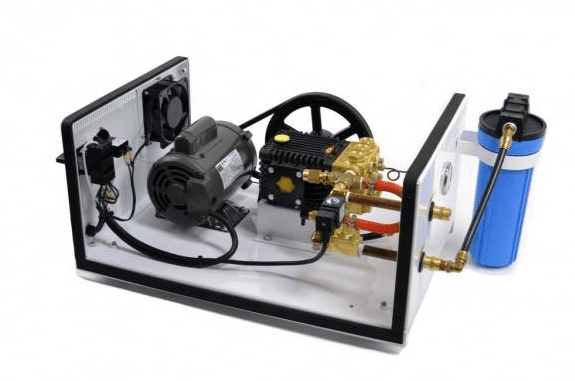
Misting systems have become increasingly popular for cooling outdoor spaces, greenhouses, and residential patios. These systems rely on misting pumps to generate a fine mist that cools the surrounding air, making it a comfortable place to relax during the hot summer months. To ensure the longevity and optimal performance of your misting system, it’s essential to understand the importance of misting pump maintenance. This article will explore some valuable tips and tricks to keep your misting pump running smoothly.
Why Misting Pump Maintenance Matters
Misting pumps are the heart of any misting system, responsible for pressurizing water and pushing it through tiny nozzles to create a fine mist. Over time, misting pumps can accumulate dirt, debris, and mineral deposits, hindering their performance and reducing lifespan. Regular maintenance can help prevent these issues and keep your misting system functioning efficiently.
Clean the Pump and Nozzles
Keeping it clean is one of the most critical aspects of misting pump maintenance. Dirt, dust, and debris can clog the pump’s intake, reducing water flow and increasing strain. To clean the pump, start by turning off the power and disconnecting it from the water source.
Next, remove the pump’s housing or cover and inspect the inside for any visible debris. Use a soft brush or compressed air to remove any loose particles. Be sure to check the inlet screen for any clogs and clean it thoroughly. Additionally, inspect the misting nozzles for clogs or mineral buildup. If you notice any obstructions, clean them using a nozzle cleaner or a mixture of vinegar and water.
Check for Leaks
Leaking water can cause damage to your misting pump and surrounding components. Regularly inspect the pump and all connections for any signs of leakage. Tighten loose fittings, replace damaged hoses, and address any leaks promptly to prevent water damage and pump inefficiency.
Lubricate Moving Parts
Some misting pumps have moving parts, such as bearings and motors. Lubricating these parts can extend their lifespan and reduce friction, leading to wear and tear. Refer to your pump’s manual for specific lubrication recommendations, and use the appropriate lubricant.
Monitor Water Quality
The water quality you use in your misting system can impact its longevity and performance. Hard water, which contains a high concentration of minerals, can lead to mineral buildup in the pump and nozzles. Consider using a water softener or filtration system to improve water quality. Regularly test your water for mineral content and take appropriate measures to prevent mineral deposits from forming.
Keep the Pump Motor Cool
Misting pumps generate heat during operation, and excessive heat can shorten the motor’s life. Ensure that the pump has adequate ventilation to dissipate heat effectively. Avoid placing the pump in direct sunlight or in areas with poor air circulation. If your misting pump becomes excessively hot, it may be a sign of an issue, and you should consult the manufacturer or a professional for guidance.
Schedule Regular Inspections
To maintain the longevity and performance of your misting pump, it’s a good practice to schedule regular inspections. Depending on the frequency of use and environmental conditions, inspections can be performed monthly or at the start of each misting season. During these inspections, check for any visible wear and tear, loose connections, or unusual noises.
Follow Manufacturer Recommendations
Every misting pump is unique, and manufacturers often provide specific maintenance guidelines in the user manual. Be sure to read and follow these recommendations closely. They may include information on maintenance intervals, lubrication points, and troubleshooting tips. By adhering to the manufacturer’s guidance, you can ensure that your misting pump operates at its best.
Plan for Winter Maintenance
If you live in an area with freezing temperatures, preparing your misting system for the winter months is crucial. Water left in the system can freeze and cause damage to the pump and hoses. Before winter arrives, drain the water from the system and disconnect the pump. Store it in a cool, dry place to protect it from freezing temperatures.
Conclusion
Regular maintenance of misting pumps is essential for their longevity and optimal performance. By following tips and tricks such as cleaning filters, checking for leaks, and lubricating moving parts, you can ensure that your misting pump continues to operate efficiently, providing adequate cooling and humidity control for your environment. Neglecting maintenance can lead to costly repairs and reduced functionality, so investing time in upkeep pays off in the long run.
